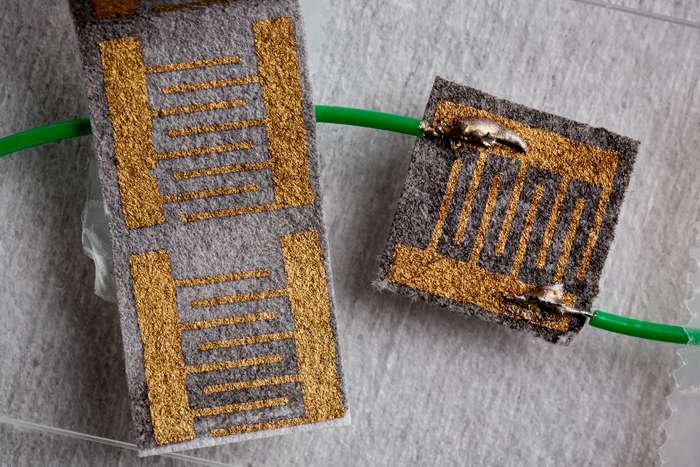Portable device can quickly determine the extent of an eye injury

An engineer and an ophthalmologist are developing a portable sensor that can quickly and inexpensively determine whether an eye injury is mild or severe. The device, called OcuCheck, measures levels of vitamin C in the fluids that coat or leak from the eye. The sensor could speed efforts to determine the extent of eye injuries at accident sites, in rural areas lacking ophthalmology specialists or on the battlefield, the researchers said.
"The sensor takes advantage of the fact that the ocular tear film - the viscous fluid that coats the eyeball - contains low levels of ascorbic acid, which is just vitamin C, while the interior of the eye contains much higher levels," said University of Illinois bioengineering professor Dipanjan Pan, who is creating the device in collaboration with Carle ophthalmologist Dr. Leanne Labriola. "So the concept is, if there is severe damage to the eye that penetrates deeply, the ascorbic acid will leak out in high concentration."
Two postdoctoral researchers in Pan's laboratory, Manas Gartia and Santosh Misra, helped develop the new sensor. The researchers report their work in the journal Scientific Reports.
At present, those with eye injuries must find their way to a hospital to have their injuries assessed. The process is often complicated, time-consuming and imprecise, Pan said.
"The new device will change the standard of care for evaluating eye traumas," Labriola said.
No current techniques for assessing eye injuries involve measurements of ascorbic acid, Pan said. "So this is a one-of-a-kind approach."
The new sensor uses graphene platelets that are layered 1 nanometer thick on filter paper. Upper layers include a unique polymer that interacts with the graphene; gold electrodes; and ascorbate oxidase, an enzyme that binds to ascorbic acid.
"The idea is that the moment that the ascorbic acid comes in and binds to the ascorbate oxidase, it will pull the polymer out of its interaction with the graphene," changing the sensor's electrical properties, Pan said.
In tests with clinical samples from 16 patients undergoing eye surgery, the team found that their sensor could - with high sensitivity, accuracy and specificity - detect a range of ascorbic acid concentrations.
OcuCheck has not yet been tested on samples from trauma patients, Pan said.
"But we have mixed the samples with blood, and the sensor's sensitivity to ascorbic acid is retained even in the presence of blood. The filter paper will filter out the blood," he said.
"This technology has the ability to impact a large number of patients, particularly in rural settings, where access to an ophthalmologist can be limited," Labriola said.
The team is working with an industrial design professor at Illinois to build a housing for the sensor that will be portable and easy to use, Pan said. Pan and Labriola have founded a new company, InnSight Technology, to help them bring the device to market. The company has obtained a phase I Small Business Innovation Research grant from the National Science Foundation.
"This is a perfect example of physicians and engineers working together to find solutions to current problems in health care," Pan said, referring to the Carle Illinois College of Medicine, a new engineering-based medical college soon to be established on Illinois' Urbana-Champaign campus.
More information: Manas R. Gartia et al. Point-of-service, quantitative analysis of ascorbic acid in aqueous humor for evaluating anterior globe integrity, Scientific Reports (2015). DOI: 10.1038/srep16011
Journal information: Scientific Reports
Provided by University of Illinois at Urbana-Champaign





















